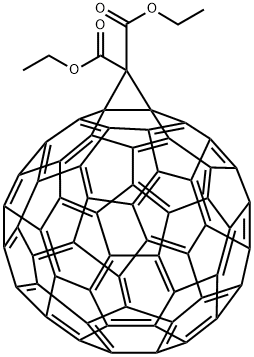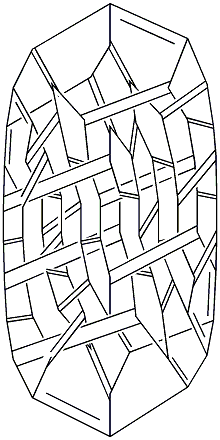GLASSY CARBON
Synonym(s):CNT;SWCNT;Charcoal activated;Charcoal, Activated;Tuball
- CAS NO.:16291-96-6
- Empirical Formula: Unspecified
- Molecular Weight: 12.01
- MDL number: MFCD00133992
- EINECS: 240-383-3
- Update Date: 2024-12-18 14:08:52

What is GLASSY CARBON?
Description
The first use of charcoal comes from the black pigment used in European cave paintings around 32 000 years ago. It is possible that the earliest use of charcoal as a fuel in the smelting of copper began over 7000 years ago. The first definite evidence of human involvement with charcoal as a fuel goes back to 5500 years ago in the Middle East and Southern Europe, when the Egyptians, who were expert metal workers, discovered the smelting of iron using charcoal.
Chemical properties
Graphite is crystallized carbon and usually appears as soft, black scales. There are two types of graph ite, natural and artificial (activated). Natural and synthetic graphite may be mixed with each other or contain other additives.
The Uses of GLASSY CARBON
Charcoal has been used since the earliest times for several of purposes, including medicine and art, but by far its most important use has been as a metallurgical, cooking, industrial, and automotive fuel. Charcoal is used as a conventional fuel where an intense heat is wanted. Charcoal was also used historically as a source of carbon black in chemical reactions by grinding it up. In this form charcoal was a constituent of formulas for mixtures such as gunpowder and was important to early chemists. Due to its high surface area, charcoal can be used as a catalyst, a filter, or an adsorbent.
Definition
GLASSY CARBON is an amorphous form of carbon produced by partially burning or oxidizing wood or other organic matter.
General Description
A black powder or granular mixed with a tar or starch and water binder pressed into regular lumps or briquettes. Heats slowly and ignites in air especially if wet.
Air & Water Reactions
Flammable. Insoluble in water.
Reactivity Profile
Explosions have occurred when liquid air contacts organic matter. A cracked tube of activated charcoal immersed in liquid air exploded violently [J. Sci. Inst. 5:24 1928]. Zinc chlorate and charcoal (or finely divided organic material) form mixtures that may ignite or explode. Ignition or explosion may be caused by friction, percussion, or shock [U.S. Army Ordnance Safety Manual 1951].
Health Hazard
No significant symptoms
Fire Hazard
Special Hazards of Combustion Products: Incomplete combustion forms toxic carbon monoxide.
Safety Profile
Carbon itself has no toxic action, but it contains impurities that may be toxic. Fire hazard: reacts with liquid air, Ba(ClO3)2, BrFj, Cl0, Ca(ClO3)2, ClF2, F2, H2O2, Mg(ClO3)2, (O2 + wood), perchlorates, peroxides, (P + air), K + KClO3, mo3, Ru04, AgNO3, NaClO3, (AgCl + NaO2), S, (S + NaNO3), Zn(ClO3)2. Heats spontaneously, particularly when wet, freshly calcined, or tightly packed, and it can ignite and burn. Slight explosion hazard when exposed to heat or flame. To fight fire, use water, mist, foam, or dry chemical. When heated to decomposition it emits acrid smoke and fumes.
Potential Exposure
Natural graphite is used in foundry facings, steel making lubricants, refractories, crucibles, pencil “lead,” paints, pigments, and stove polish. Artificial graphite may be substituted for these uses with the excep tion of clay crucibles; other types of crucibles may be pro duced from artificial graphite. Additionally, it may be used as a high temperature lubricant or for electrodes. It is uti lized in the electrical industry in electrodes, brushes, con tacts, and electronic tube rectifier elements; as a constituent in lubricating oils and greases; to treat friction elements, such as brake linings; to prevent molds from sticking together; and in moderators in nuclear reactors. In addition, concerns have been expressed about synthetic graphite in fibrous form. Those exposed are involved in production of graphite fibers from pitch or acrylonitrile fibers and the manufacture and use of composites of plastics, metals, or ceramics reinforced with graphite fibers.
Environmental Fate
Due to its large surface area, charcoal exerts its effects by absorbing a wide variety of drugs and chemicals. After the toxic substance attaches to the surface of the charcoal and because charcoal is not absorbed, it stays inside the GI tract, being eliminated in the feces along with the charcoal. In single-dose therapy, activated charcoal adsorbs the toxic substance ingested, and thus inhibits GI absorption and prevents or reduces toxicity.
Shipping
UN1362 Carbon, activated, Hazard Class: 4.2; Labels: 4.2-Spontaneously combustible material, International.
Toxicity evaluation
The presence of charcoal in a compound elevates the Koc value,
resulting in reduction of mobility of compounds through the
sediment and soil.
Charcoal is stable under ambient environmental conditions.Hazardous short-term degradation products of charcoal are not
likely.
Charcoal and its products of degradation are not toxic.
Special remarks on the products of biodegradation are not
available.
Incompatibilities
Graphite is a strong reducing agent and reacts violently with oxidizers, such as fluorine, chlorine trifluoride, and potassium peroxide. Forms an explosive mixture with air. May be spontaneously combustible in air.
Waste Disposal
Do not incinerate. Carbon (graphite) fibers are difficult to dispose of by incineration. Waste fibers should be packaged and disposed of in a land fill authorized for the disposal of special wastes of this nature, or as otherwise may be required by law.
Properties of GLASSY CARBON
| Melting point: | 3550 °C(lit.) |
| Boiling point: | 500-600 °C(lit.) |
| Density | ~1.7 g/mL at 25 °C(lit.) |
| vapor pressure | <0.1 mm Hg ( 20 °C) |
| Flash point: | >230 °F |
| form | rod |
| Water Solubility | 2-3800μg/L at 20-25℃ |
| Dielectric constant | 1.2-1.81(0.0℃) |
| EPA Substance Registry System | Charcoal (16291-96-6) |
Safety information for GLASSY CARBON
| Signal word | Warning |
| Pictogram(s) |
 Exclamation Mark Irritant GHS07 |
| GHS Hazard Statements |
H319:Serious eye damage/eye irritation H335:Specific target organ toxicity, single exposure;Respiratory tract irritation |
| Precautionary Statement Codes |
P305+P351+P338:IF IN EYES: Rinse cautiously with water for several minutes. Remove contact lenses, if present and easy to do. Continuerinsing. |
Computed Descriptors for GLASSY CARBON
GLASSY CARBON manufacturer
Mohit Chemical And Pharmaceuticals
New Products
Tert-butyl bis(2-chloroethyl)carbamate 4-Methylphenylacetic acid N-Boc-D-alaninol N-BOC-D/L-ALANINOL N-octanoyl benzotriazole 3-Morpholino-1-(4-nitrophenyl)-5,6-dihydropyridin- 2(1H)-one Furan-2,5-Dicarboxylic Acid DIETHYL AMINOMALONATE HYDROCHLORIDE 1,1’-CARBONYLDIIMIDAZOLE R-2-BENZYLOXY PROPIONIC ACID 1,1’-CARBONYLDI (1,2-4 TRIAZOLE) N-METHYL INDAZOLE-3-CARBOXYLIC ACID (2-Hydroxyphenyl)acetonitrile 4-Bromopyrazole 5-BROMO-2CYANO PYRIDINE 5,6-Dimethoxyindanone 5-broMo-2-chloro-N-cyclopentylpyriMidin-4-aMine 2-(Cyanocyclohexyl)acetic acid 4-methoxy-3,5-dinitropyridine 1-(4-(aminomethyl)benzyl)urea hydrochloride 2-aminopropyl benzoate hydrochloride diethyl 2-(2-((tertbutoxycarbonyl)amino) ethyl)malonate tert-butyl 4- (ureidomethyl)benzylcarbamate Ethyl-2-chloro((4-methoxyphenyl)hydrazono)acetateRelated products of tetrahydrofuran








You may like
-
 Carbon activated 16291-96-6 98%View Details
Carbon activated 16291-96-6 98%View Details
16291-96-6 -
 Carbon activated 16291-96-6 98%View Details
Carbon activated 16291-96-6 98%View Details
16291-96-6 -
 1975-50-4 98%View Details
1975-50-4 98%View Details
1975-50-4 -
 2-HYDROXY BENZYL ALCOHOL 98%View Details
2-HYDROXY BENZYL ALCOHOL 98%View Details
90-01-7 -
 2-Chloro-1,3-Bis(Dimethylamino)Trimethinium Hexafluorophosphate 221615-75-4 98%View Details
2-Chloro-1,3-Bis(Dimethylamino)Trimethinium Hexafluorophosphate 221615-75-4 98%View Details
221615-75-4 -
 14714-50-2 (2-Hydroxyphenyl)acetonitrile 98+View Details
14714-50-2 (2-Hydroxyphenyl)acetonitrile 98+View Details
14714-50-2 -
 118753-70-1 98+View Details
118753-70-1 98+View Details
118753-70-1 -
 733039-20-8 5-broMo-2-chloro-N-cyclopentylpyriMidin-4-aMine 98+View Details
733039-20-8 5-broMo-2-chloro-N-cyclopentylpyriMidin-4-aMine 98+View Details
733039-20-8